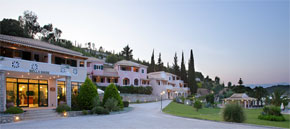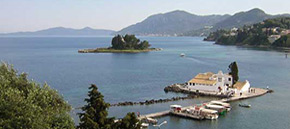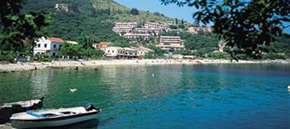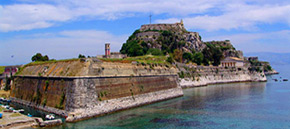- +30 26630 81997
- stay@belmare.gr
Corfu History
Corfu History
The beginnings of the island
The beginnings of the Corfu town date back to ca 750 B.C, dating back to the Paleolithic Age. The rich history of the island begins with its first inhabitants called Liburnians (of Illyrian decent) that were mainly sailors.
Since 734 B.C Corcyra (ancient name of Corfu) developed quickly and in a short time became the second naval force at sea, and was the first island of Greece which had its own fleet. The fleet often fought under the flag of Athens and in return of its performance, the island was honorable joined the Athenian Confederation. Later the Corcyra was taken over by many countries. Later in 255 BC after the of death King of Epirus Alexander , the island became independent.
Corfu under the Romans
After being conquered by Romans in summer 229 BC ,the island was the first territory which passed under the dominion of the Roman Empire. In truth the island possessed own laws and magistrates but the inhabitants of the island were enslaved. During the five centuries of Roman governments, the Corcyra was used as a naval station for Roman hostilities in Eastern Mediterranean.
Byzantine Corfu
In 395 AD the island was included in the Byzantine Empire and remained until 1204 A.C . During the Byzantine dominion many important buildings were build such as Byzantine basilica. The feudal system was introduced first time to the island.
Despots of Epiros
From 1214 until 1267 The Corfu island became part of an independent Greek State headed by Byzantine House of Angeloi Comneni that was called then Despots of Epiros.
The Angevins in Corfu
In 1267 the government of the island changed again , This time they were The Angevins . During their reigns the island was divided into four parts called the Circle (the Mountain [Oros], the Circle [Gyrou], the Centre [Mesi], and Lefkimi). In 1386 after death of Charles III of Anjou , The Angevins left the island.
The Venetian in Corfu
In 9th of June 1386 island came into possession of the Venetians .During the reign of Venetians on the island, was first cultivated olive groves, which in a few years covered almost the whole island. The Venetian rule lasted for more than four centuries ,and during this time were built very important buildings as Old and New Fortress. The Venetian architecture can be also be seen in the main town . The Venetian rule ended in 1797 .
The Republican French
France occupation began of 1797 when The Napoleon Bonaparte conquered the Corfu island .According the Treaty of Campoformio, Corfu and the all Ionian island were included in to the French Republic. France rule ended at 3rd of March 1799 .
The Russians and the Turks.
On the 4th of November 1798 Russian and Turkish fleets reached the Channel of Corfu. The island was bombarded nearly for four months .In the end to 3rd of March 1799 the island was almost completed destroyed . Corfu was passed into the hands of the Russians and Turks. One of the most important initiatives of the Russian was the restoration of Orthodox religion in the island. The government Russians and Turks rule didn`t last for long but just for 2 years.
State of the Seven Ionian Islands
According the Treaty of Constantinople that was signed between Russian , Turks the Septinsular State has been created in 1908 and lasted only 7 years. It was the first first Greek country after the fall of Constantinople in 1453. It was called the of State of the Seven Ionian Islands. At 1807 , the island was were ceded by Russia to France empire ruled by Napoleon. Count John Capodistrias was appointed as General Secretary of State.
Later, In 1827 he was also unanimously elected by the Greek assembly, the President of an Independent Greece . He was a very talented politic who was organized public education also revolutionized political and agricultural structures . Unfortunately he was assassinated four year later .
The Imperial French
Under the next agreement called Treaty of Tilsit included between the Emperor Napoleon I, and Czar Alexander adopted that the Russian conceded their rights over the Ionian Islands to the French. French government contributed significantly to the development of culture and education . Then was founded the Ionian Academy and the first school of Fine Arts in Corfu .
British Protectorate
In 30th of May 1814 after to the fall of Napoleon The British began to rule the island of Corfu. There were ten High Commissioners, each of them contributed with different ideas to change the island. In the end on the 21st of May 1864, Corfu was united with Greece.
As you can see that the Corfu island during from ancient times to the present was in possession of various monarchs. Some of them was the reason development of the island and same contributed to the collapse of the island. In the end The Kerkira is an beautiful island reach of history.
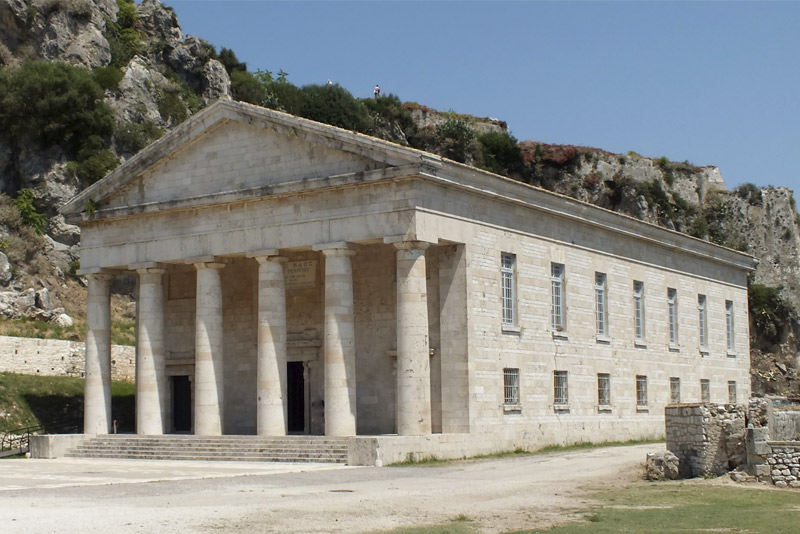 |
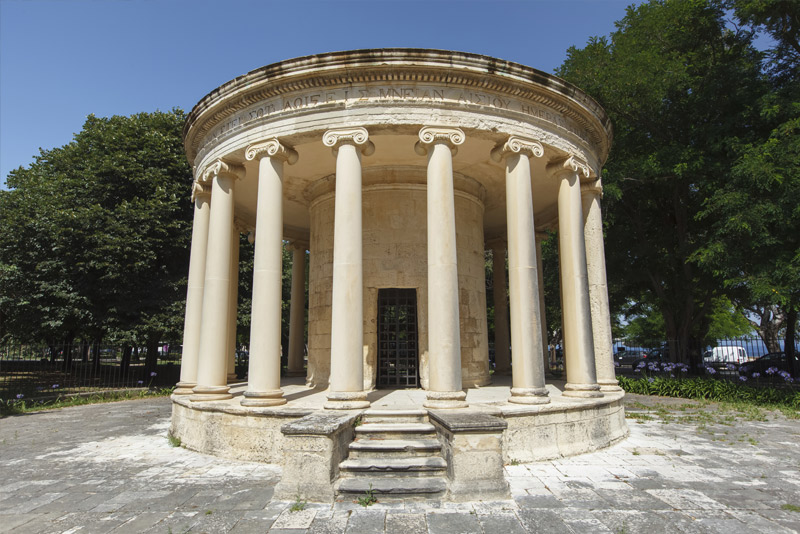 |
Mythology in Corfu
Mythology leads us to believe that the Ionian Sea was named after Io the priestess of Hera. It is said that Zeus and Io were lovers. When Hera caught them together she was so infuriated that she turned Io into a cow and tied her to an olive tree with a twenty four hour guard of Argus (who had eyes all over his body).
Zeus sent Hermes to play the pipes until Argus was sound asleep. Io was set free, but Hera sent a gadfly to plague Io and she madly ran from island to island, starting by jumping over the now named Ionian Sea. She finally settled in Egypt, returning to her human form and bore Zeus a son.
Corfu has been known by many names, the Greeks call it Kerkyra. This is said to derive from the nymph Corkyra. Corkyra could also have been Gorgyra or Gorgo (the demonic Medusa) as she is depicted on the temple of Artemis near Corfu town.
The Greek goddess of harvest Demeter, is believed to have thrown her sickle into the Ionian Sea. Upon landing, the sickle was petrified and formed the shape of Corfu. The two peaks gave the island the name Corfiou, which was later changed to the one we use today, Corfu.
Corfu has featured in other mythological episodes; according to Homer, who called the island Scheria, Odysseus during his ten year journey home to Ithaca, touched upon Scheria. Earlier in his trip, he and his crew had come across the Cyclops Polyphemus, the son of Poseidon. Odysseus killed him in a fight. When Poseidon saw Odysseus sailing home he sent a storm with the anger he felt at losing his son. Odysseus, the only survivor was washed up on Scheria where the king’s daughter Nausica found him. King Alcinoos heard Odysseus’s account of his travels and gave him a ship and crew to return home. Alcinoos again was very hospitable to visitors to the island, in particular the Argonauts while they were on the run after obtaining the Golden Fleece from Troy.

